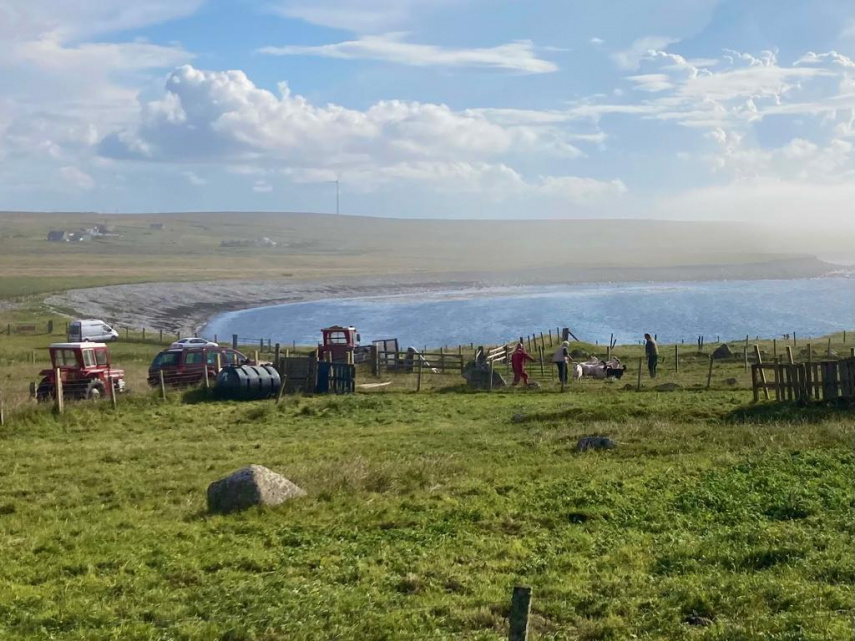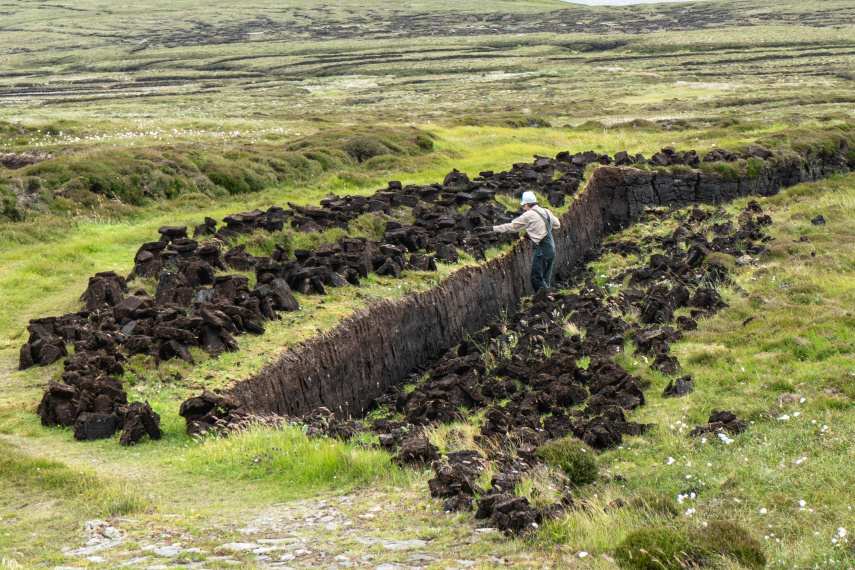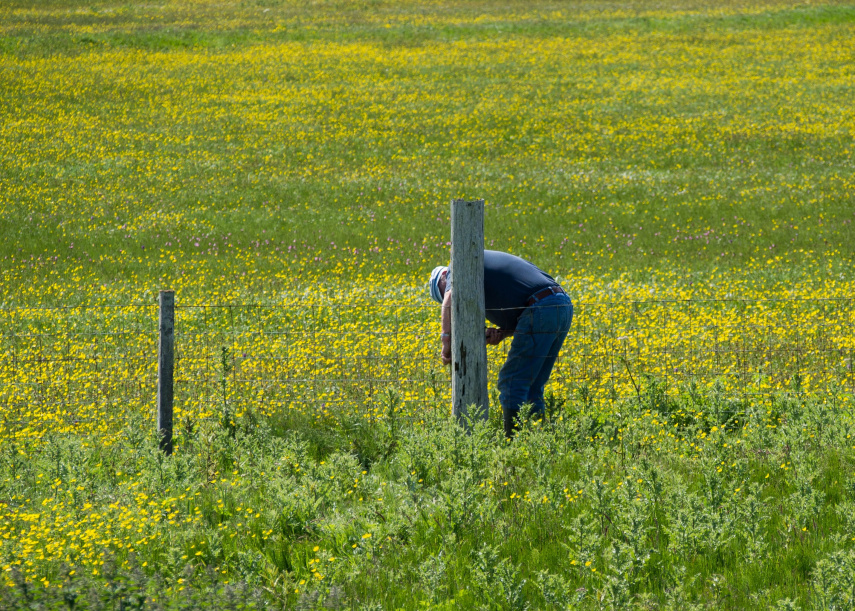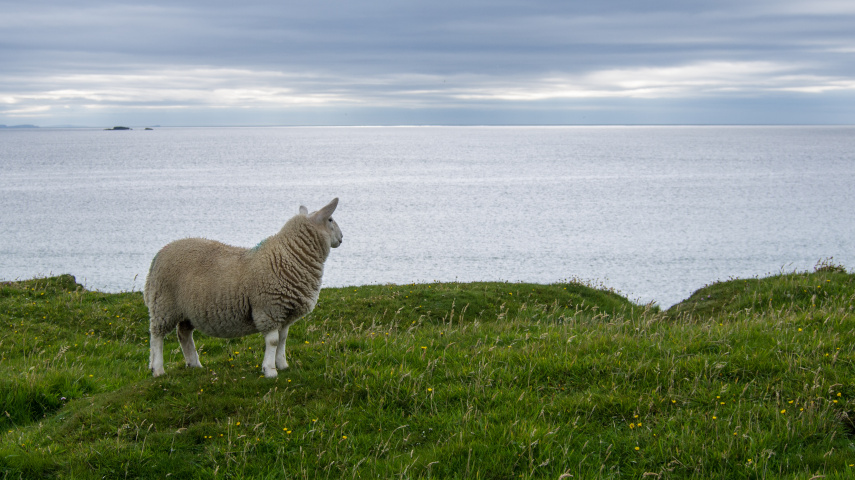Urras Oighreacht Ghabhsainn (Galson Estate Trust) – Land Management Planning
The estate
Galson is a community-owned estate in the north-west of the Isle of Lewis, purchased in 2007 and managed by the Urras Oighreachd Ghabhsainn (Galson Estate Trust) for and on behalf of the community. The 23,000-hectare site covers an area of north Lewis running from Port of Ness to Upper Barvas. Its population is nearly 2,000 among 22 crofting townships.
The Trust communities depend on an intricate interaction between crofting lifestyle, panoramic landscape and diverse natural environment. The estate boasts stunning coastal scenery, excellent fishing grounds and several Special Areas of Conservation and Special Protection Areas. The interaction between the estate land and the crofting lifestyle they aim to sustain is explained on the Trust's website and in their Strategic Plan.
We spoke about Galson land management planning with Operations Manager Christine Amos.

The planning process
In 2016, the Trust carried out an extensive community engagement process to develop their Strategic Plan. Its clear vision is for a “A thriving and well-connected community with excellent local services and amenities, harnessing its natural assets to sustain a unique cultural and social environment.” As this 20-year plan comes up for a five-year review, the Trust are now developing their first Land Management Plan, to connect opportunities from ownership of the land more clearly to their strategic goals.
Developing the first land management plan has taken time, and only began after 2019, when appointment of their first Operations Manager (Christine) gave the Trust the capacity to do so. “We started by pulling a small task group together. Some of our land is managed in partnerships with other organisations, such as RSPB and John Muir Trust, so we bought in their local expertise along with other colleagues, and looked at examples of plans produced elsewhere. Then we brainstormed what it would need to include, and each of us put together bullet points for particular sections.”
Although the plan is not yet finalised there is now a draft, approaching its final stage. Much of the work has been in pulling together information and detail about the estate, such as activities, partnership arrangements and stakeholders. The estate owns significant areas of land under Statutory Designations, with the remainder being primarily under crofting tenure. These areas have been identified and mapped in the Plan, together with the last known condition from monitoring data, so that the impact of interventions can be tracked.

Mapping the estate and its habitats supports clear transparency of ownership, Christine says. “It shows our responsibilities. We have sub-plans for each one, and have identified all our management and partnership agreements, and all our stakeholders.”
At first the scope of what had to be considered, planned and managed – for an area as big as Galson – seemed daunting, Christine says. What made it manageable was the decision to identify three themes related to their strategic plan: People, Flora and Fauna, and Heritage. “These gave us the structure we needed. The plan identifies a small number of intended outputs under each theme, followed by three or four activities to achieve it. The detailed information on outputs and activities is included in short technical appendices, keeping the body of the plan brief and easy to read.”
The Trust’s strategic aims align closely with the principles of the Land Rights and Responsibilities Statement. So while these have not significantly altered the approach or directly shaped the plan, they are listed and have been taken into consideration throughout. “They are important and should be included.”
Christine expects that the plan will continually evolve in response to changing conditions, and was relieved to hear that other landowners are of the same mind – land management plans interweave with other strategies and plans, and rarely remain static. Changing aspects of life around Galson include tourism – rapidly-increasing visitor numbers putting serious pressure on fragile ecosystems – and education and retention of the younger population. “Unless we work closely with young people to ensure that crofting remains part of their culture, that whole way of life will end.”
Christine estimates that this first plan might have been devised and written in three to four weeks, but was spread over several months to fit around other work pressures. “The plan will be finalised soon. Things change all the time and you can always include more. But at some point you have to say: ‘Even if it’s not quite perfect, we will go with that.’”

Key lessons to share
For anyone starting a first land management plan, Christine recommends consulting as many experts as possible. “There will be things you haven’t considered. But be mindful that this consultation will take you down many paths, and you will begin to wonder how you can bring it all together. Keep chipping away at it; keep speaking to people.”
Her own experience in strategic planning in other sectors has clearly also helped. “But in the longer term, we want someone more land-based in the team – someone on the ground, to make sure all the aims and objectives and outputs in the plan are actually happening.”
The plan will evolve as circumstances change or new expert advice becomes available, she says. “In five years’ time, things could be completely different. We don’t know how climate change will impact us and we will have to respond to that.”
Christine and her team have come a long way from the blank sheet of paper with which they began their planning. Looking back, the one thing that would have helped most, right at the beginning, would have been someone to talk to, she says. “Printed documents are useful, but having somebody you can pick up the phone to and ask a quick question would have really helped me.”
Case studies and the Good Practice team at the Scottish Land Commission are a useful resource. But the Trust are also developing that learning and shared experience locally. “Land Trusts in the islands are all at different stages, but there should be opportunities for us to work together, with some shared resources for land and visitor management. We have now set up Community Land Hebrides, which meets twice a year and helps members identify opportunities for collaboration and improve the sharing of knowledge, ideas and best practice.”
Find Out More
Urras Oighreachd Ghabhsainn
Business Centre
Tom na Bà
South Galson
Isle of Lewis
HS2 0SH
Email: office@uogltd.com
Tel: 01851 850393
